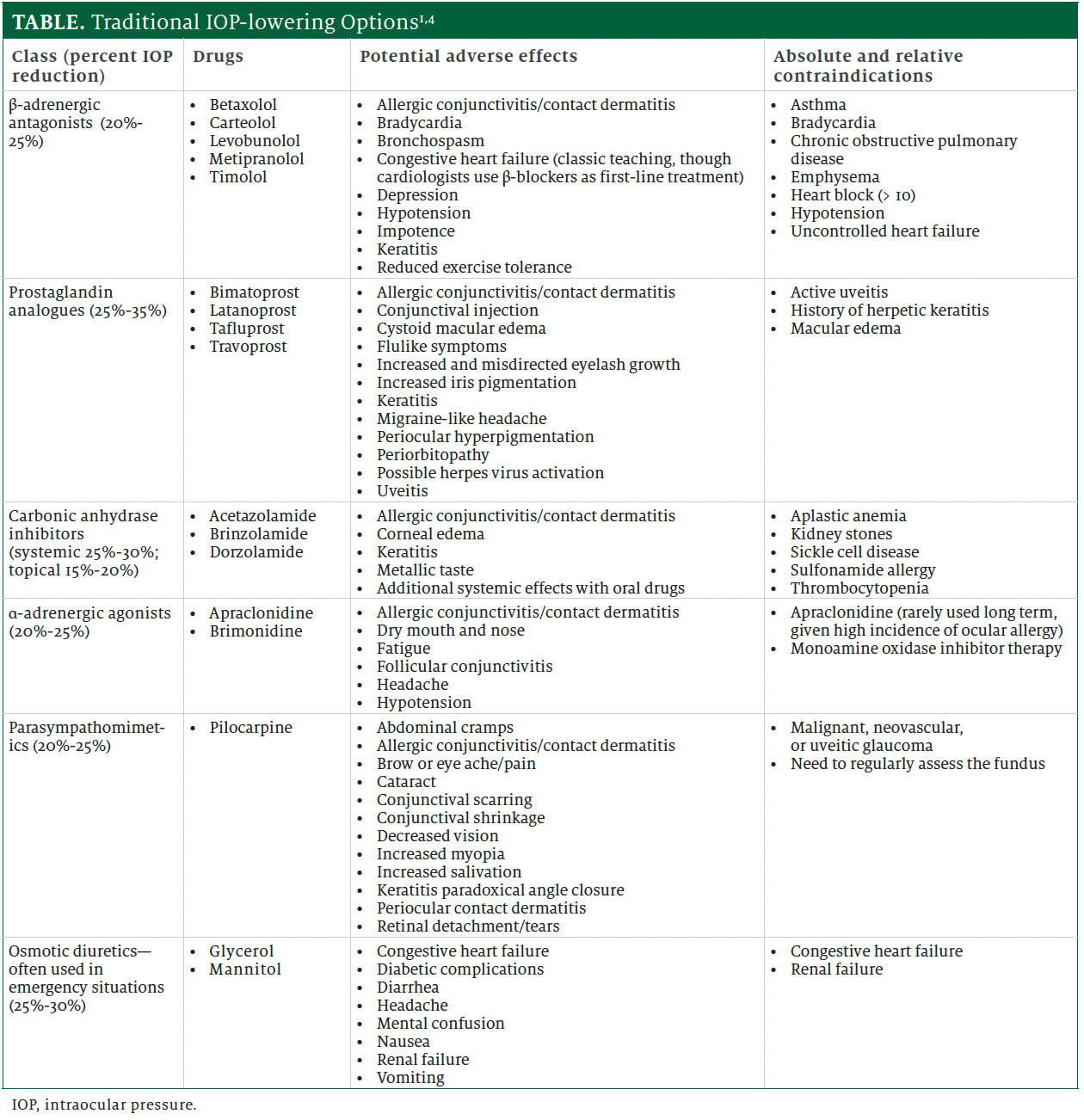Article
Lowering Intraocular Pressure Is the Only Approach for Glaucoma
Author(s):
But gene therapy may be the next big change; researchers recently identified a calcium modulator that protects the optic nerve in mice.
Approximately 45 million individuals globally have open-angle glaucoma.1 Ophthalmologists classify glaucoma, a group of ocular diseases, based on the anatomy of the eye’s anterior chamber angle. Untreated, it can progress to optic neuropathy and lead to vision loss.2 Glaucoma is the second-leading cause of bilateral blindness worldwide and the No. 3 cause of blindness in the United States, with approximately 130,000 Americans affected.2 Given the aging population, experts estimate that clinicians will diagnose 4 million Americans with open-angle glaucoma by 2030.3
Primary open-angle glaucoma (POAG) is the most common type of glaucoma and a chronic disease with characteristic acquired optic nerve atrophy and loss of retinal ganglion cells and their axons.1 Usually bilateral, POAG can be asymmetric. Although many patients with POAG present with elevated intraocular pressure (IOP), nearly 40% may not. This creates so-called silent disease conditions.1 Treatment strategies target and reduce IOP, which is considered POAG’s major risk factor and only modifiable symptom.4
AGE, RACE ARE FACTORS
Glaucoma’s severity ranges from mild (ie, normal visual field) to severe (ie, diminished visual field). When glaucoma develops late in life and in mild forms, aggressive therapy may be optional. Younger patients who develop severe disease need aggressive treatment.4
POAG’s prevalence increases between 5-fold and 10-fold between the fifth and eighth decades of life.3 Its prevalence differs among various ethnic and racial groups.1 In the United States, Black individuals are 3 times more likely to develop POAG than non-Hispanic White individuals are to develop POAG. Those of African-Caribbean heritage are more likely to have POAG than African American individuals are. Asian American and Latino individuals have a similar prevalence, which is higher than that among non-Hispanic White individuals.1,5
Lowering IOP using drugs or surgery is the only intervention available. Treatment’s goal is to halt or slow the rate of progressive visual deterioration.4 Ophthalmologists prefer a variety of topical ocular medications to surgery. Although effective, each medication has the potential to cause adverse effects (AEs) and/or interactions with concomitant medications or disease states.4
FINALLY, NEW DRUGS
New drugs for glaucoma have been approved in waves. Until recently, the last new class of drugs entered the market in 2000 and 2001. In November 2017, the FDA approved latanoprostene bunod (Vyzulta).6 It releases nitric oxide, which is thought to relax the trabecular meshwork to increase drainage of aqueous humor and improve outflow. In clinical trials, latanoprostene bunod lowered IOP more than latanoprost and timolol. Common AEs include conjunctival hyperemia, eye irritation, eyelash growth, and eye pain at administration.6
Netarsudil mesylate (Rhopressa) is a rho-associated protein kinase (ROCK) inhibitor that the FDA approved in December 2017.7 ROCK inhibitors are thought to lower IOP by relaxing the trabecular meshwork and Schlemm’s canal, the connection passageway that drains the aqueous humor from the eye’s anterior chamber into the veins draining the eyeball. ROCK inhibitors may also promote retinal ganglion cells’ survival. Clinical trial results showed that netarsudil lowers eye pressure to a similar degree as latanoprost and timolol. Common AEs include conjunctival hyperemia, corneal changes, and small conjunctival bleeds.7
The table4 highlights the traditional medication classes used to treat glaucoma and their associated contraindications and AEs.

CONCLUSION
The future is looking brighter for patients who have glaucoma, no pun intended. Investigators recently identified a calcium modulator that protects the optic nerve in mice, opening the door to new sight-saving therapy. The calcium/calmodulin–dependent protein kinase II pathway regulates key cellular processes and functions in the retinal ganglion.8 Until gene therapy is tested and proven, pharmacists should promote adherence to IOP-lowering therapies among patients who have glaucoma.
Jeanette Y. Wick, MBA, RPh, FASCP, is the assistant director of the Office of Pharmacy Professional Development at the University of Connecticut School of Pharmacy in Storrs.
REFERENCES
1. Prum BE Jr, Lim MC, Mansberger SL, et al. Primary open-angle glaucoma suspect preferred practice pattern guidelines. Ophthalmology. 2016;123(1):P112-P151. Published correction appears in Ophthalmology. 2018;125(6):949.
2. American Optometric Association Panel. Care of the patient with open angle glaucoma. St. Louis, MO: American Optometric Association; 2011.
3. Glaucoma data and statistics. National Institutes of Health. Updated July 17, 2019. Accessed November 25, 2021. https://www.nei.nih.gov/learn-about-eye-health/outreach-campaigns-and-resources/eye-health-data-and-statistics/glaucoma-data-and-statistics
4. Broadway DC, Cate H. Pharmacotherapy and adherence issues in treating elderly patients with glaucoma. Drugs Aging. 2015;32(7):569-581. doi:10.1007/s40266-015-0282-9
5. Pascolini D, Mariotti SP. Global estimates of visual impairment: 2010. Br J Opthalmol. 2012;96(5):614-618. doi:10.1136/bjophthalmol-2011-300539
6. Vyzulta. Prescribing information. Bausch + Lomb; 2017. Accessed December 7, 2021. https://www.accessdata.fda.gov/drugsatfda_docs/label/2017/207795Orig1s000lbl.pdf
7. Rhopressa. Prescribing information. Aerie Pharmaceuticals, Inc; 2017. Accessed December 7, 2021. https://www.accessdata.fda.gov/drugsatfda_docs/label/2017/208254lbl.pdf
8. Wang S, Liao L, Huang Y, et al. Pin1 is regulated by CaMKII activation in glutamate-induced retinal neuronal regulated necrosis. Front Cell Neurosci. 2019;13:276. doi:10.3389/fncel.2019.00276
Newsletter
Stay informed on drug updates, treatment guidelines, and pharmacy practice trends—subscribe to Pharmacy Times for weekly clinical insights.





